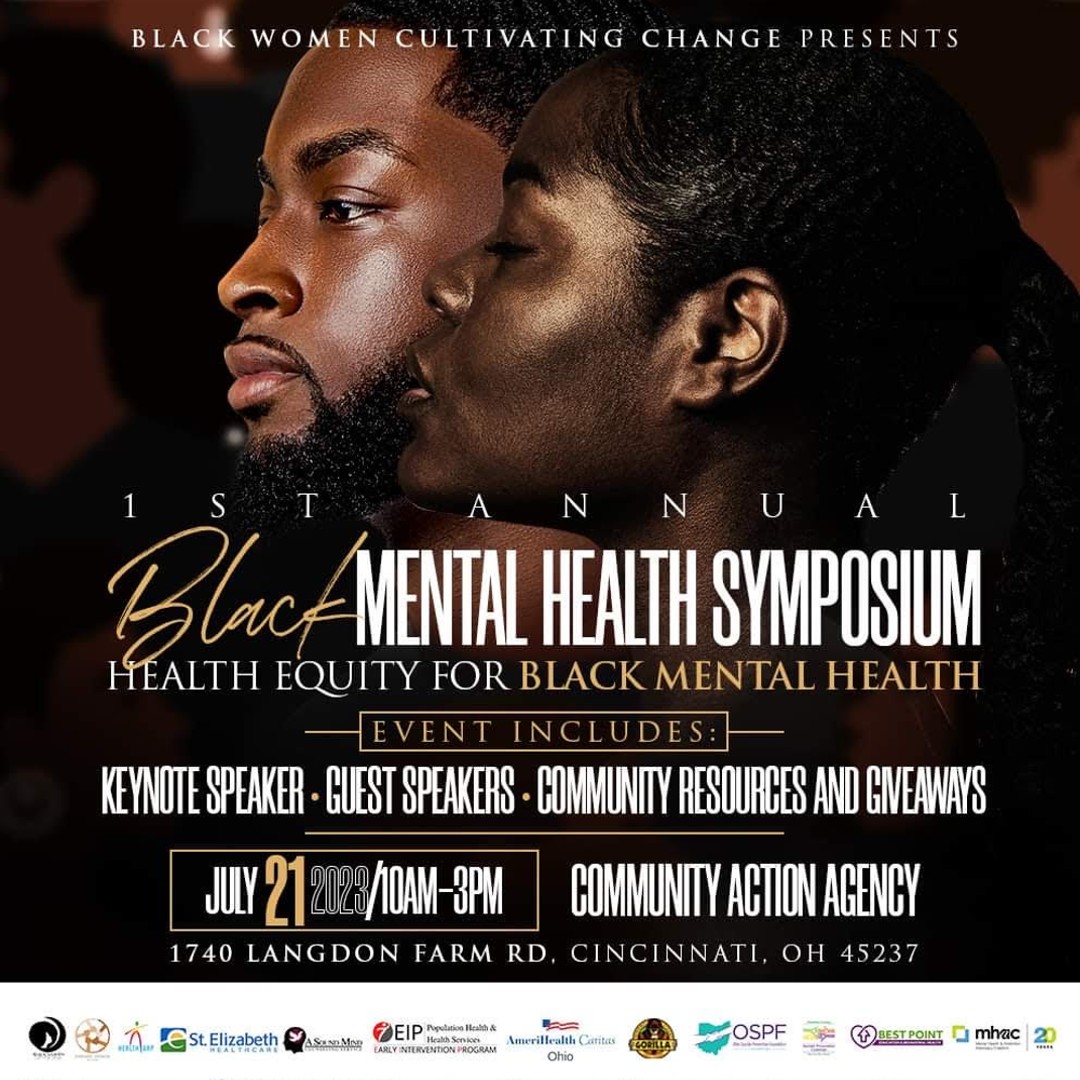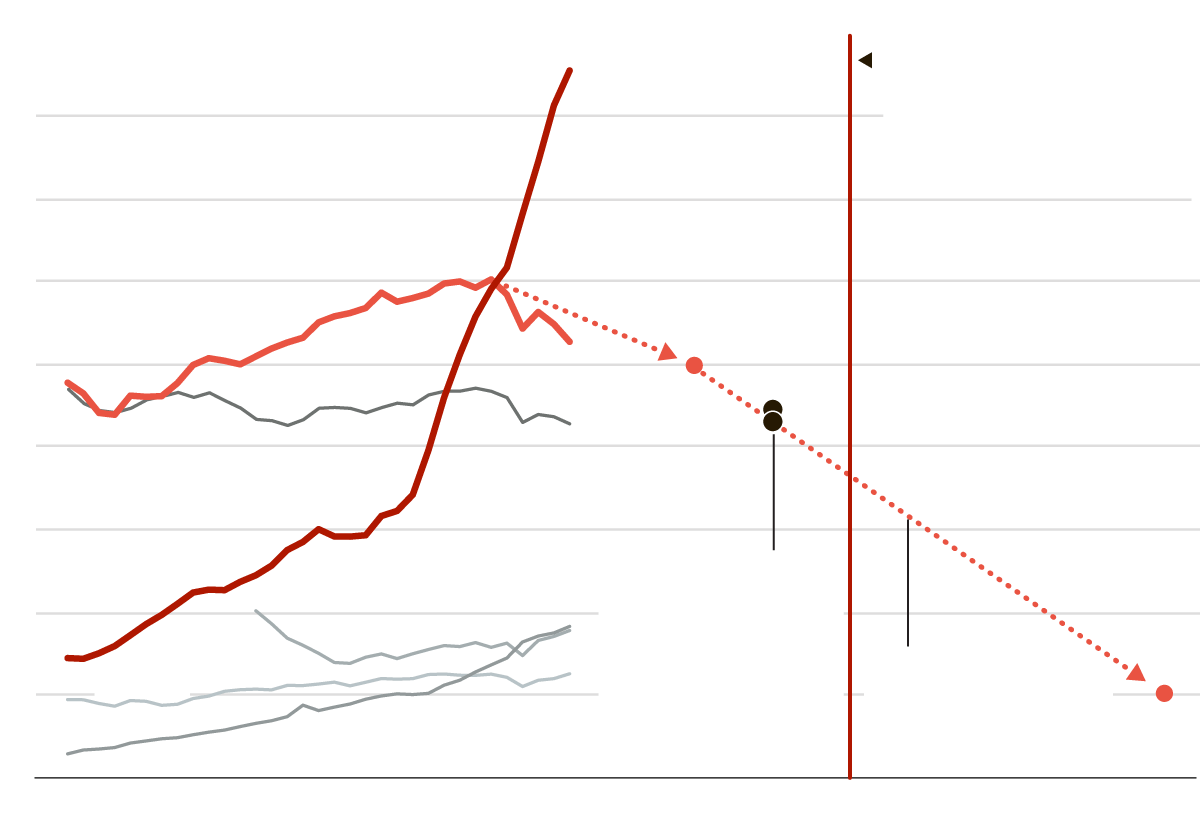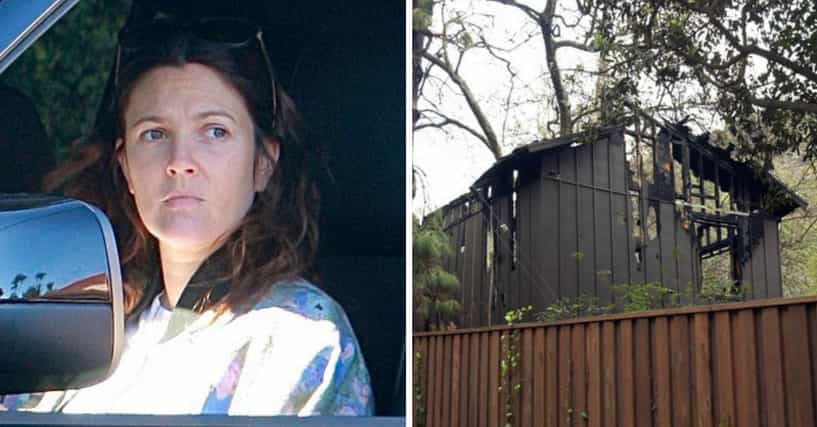The State Of Black Women In 2025: Mental Health And Beyond

Table of Contents
The Mental Health Crisis Among Black Women in 2025
The mental health landscape for Black women in 2025 remains a significant area of concern. Studies consistently reveal disproportionately high rates of mental illness compared to other demographics. This disparity demands immediate attention and comprehensive solutions.
Higher Rates of Mental Illness
Black women experience higher rates of depression, anxiety, and post-traumatic stress disorder (PTSD) than their white counterparts and other racial groups. This is not simply a matter of individual vulnerability but a reflection of the systemic pressures they face daily.
- Specific Mental Health Conditions: The prevalence of depression, anxiety, PTSD, and other mood disorders is significantly elevated among Black women. Research consistently points to this alarming trend.
- Contributing Factors: Racism, sexism, and socioeconomic disparities significantly contribute to the elevated mental health burden. The cumulative effect of these intersecting forms of oppression takes a heavy toll.
- Impact of Microaggressions and Discrimination: The constant experience of microaggressions and systemic discrimination – from subtle biases to overt racism – creates chronic stress that negatively impacts mental well-being.
Access to Mental Healthcare
Even when struggling, Black women face significant barriers to accessing quality and culturally competent mental healthcare. These barriers prevent many from receiving the help they need, exacerbating existing mental health challenges.
- Affordability and Insurance Coverage: The high cost of mental healthcare, coupled with limited insurance coverage, creates a significant obstacle for many Black women.
- Geographical Limitations: Access to mental health professionals, particularly those with cultural competence and understanding of the unique challenges faced by Black women, is often limited in many communities.
- Stigma Surrounding Mental Health: The stigma surrounding mental health within the Black community, often rooted in historical trauma and cultural norms, can discourage help-seeking behaviors.
Socioeconomic Disparities and Their Impact
Socioeconomic disparities significantly contribute to the overall well-being of Black women, creating a vicious cycle of disadvantage that impacts their mental health and life opportunities.
The Gender and Race Pay Gap
The persistent wage gap between Black women and their white male counterparts remains a stark reality in 2025. This disparity reflects a deeply ingrained system of inequity that impacts financial stability and overall well-being.
- Statistical Data: Numerous studies consistently demonstrate the significant pay gap between Black women and white men, highlighting the need for systemic change.
- Consequences of the Pay Gap: The wage gap has significant consequences, leading to financial instability, increased stress, and limited access to resources and opportunities.
- Impact on Access to Resources: The financial constraints imposed by the pay gap directly limit access to quality healthcare, education, and housing, further perpetuating the cycle of disadvantage.
Homeownership and Wealth Accumulation
Black women face significant hurdles in achieving homeownership and building wealth, largely due to historical and ongoing systemic barriers.
- Systemic Factors: Redlining, discriminatory lending practices, and other systemic factors have historically and continue to disadvantage Black women in the housing market.
- Long-Term Effects: The inability to build wealth through homeownership has long-term consequences, limiting financial security and the ability to pass on generational wealth.
- Potential Solutions and Policy Recommendations: Addressing these systemic issues requires targeted policies and initiatives aimed at promoting equitable access to homeownership and financial resources.
Political Representation and Advocacy
The underrepresentation of Black women in political leadership roles directly impacts policy decisions and their ability to advocate for their own needs.
Underrepresentation in Leadership Roles
Black women remain significantly underrepresented in positions of political power at local, state, and national levels. This lack of representation translates into a lack of voice in policy-making processes.
- Data on Representation: Statistical data clearly highlights the significant gap in representation, underscoring the need for increased opportunities for Black women in leadership.
- Impact of Underrepresentation: The underrepresentation of Black women directly impacts policy decisions affecting their communities, leading to unmet needs and overlooked concerns.
- Importance of Increased Representation: Increased representation is crucial for ensuring that the voices and experiences of Black women are heard and considered in policy decisions.
Advocacy and Activism
Black women have historically played and continue to play a crucial role in social justice movements and advocacy efforts, despite facing significant obstacles.
- Examples of Successful Activism: Numerous examples highlight the powerful impact of Black women’s activism on social change and policy reform.
- Challenges Faced by Black Women Activists: Black women activists often face unique challenges, including sexism, racism, and the burden of representing entire communities.
- Importance of Continued Advocacy and Allyship: Continued advocacy and allyship are essential for addressing systemic inequities and creating a more just and equitable society.
Social Justice and Systemic Issues
Understanding the concept of intersectionality is crucial for grasping the complexities of the challenges faced by Black women.
Intersectionality and Multiple Forms of Oppression
The concept of intersectionality highlights the overlapping nature of race, gender, and class-based oppression. Black women experience these forms of oppression simultaneously, creating unique and compounded challenges.
- Overlapping Nature of Oppression: The combined effects of race, gender, and class-based oppression create a unique set of challenges for Black women that require targeted solutions.
- Unique Challenges Due to Intersecting Identities: The unique challenges faced by Black women necessitate intersectional approaches that acknowledge and address the overlapping nature of their experiences.
- Need for Intersectional Approaches: Effective social justice initiatives must adopt intersectional approaches that address the multiple forms of oppression impacting Black women.
Combating Systemic Racism and Sexism
Dismantling systemic racism and sexism requires a multi-pronged approach encompassing policy changes, community initiatives, and education.
- Policy Recommendations and Legislative Changes: Policy changes are crucial for addressing systemic inequities and promoting social justice.
- Community-Based Initiatives and Grassroots Movements: Community-based initiatives and grassroots movements play a crucial role in driving change at the local level.
- Role of Education and Awareness-Raising: Education and awareness-raising are essential for fostering understanding and challenging ingrained biases.
Conclusion
The state of Black women in 2025 is a complex tapestry woven from the threads of mental health struggles, socioeconomic disparities, political underrepresentation, and persistent social justice issues. These factors are deeply interconnected, creating a cycle of disadvantage that requires comprehensive and systemic solutions. Addressing these challenges demands a concerted effort across various sectors – from healthcare and policy to education and community engagement. Understanding the state of Black women in 2025 is crucial for creating a more equitable future. By learning more about the challenges they face and taking action to address systemic issues, we can work towards a society where all Black women thrive. Let's continue the conversation about the state of Black women in 2025 and beyond.

Featured Posts
-
 Xis Climate Pledge Chinas Tougher Emissions Targets Without Us Collaboration
Apr 25, 2025
Xis Climate Pledge Chinas Tougher Emissions Targets Without Us Collaboration
Apr 25, 2025 -
 Northern Echos Top County Durham Hairdressers For 2025
Apr 25, 2025
Northern Echos Top County Durham Hairdressers For 2025
Apr 25, 2025 -
 Izmenenie Ritoriki Trampa O Voyne V Ukraine
Apr 25, 2025
Izmenenie Ritoriki Trampa O Voyne V Ukraine
Apr 25, 2025 -
 Wwii Memorial Event Russian Ambassador To Attend
Apr 25, 2025
Wwii Memorial Event Russian Ambassador To Attend
Apr 25, 2025 -
 Police Cordon And Csi Activity At Blackbush Walk Thornaby
Apr 25, 2025
Police Cordon And Csi Activity At Blackbush Walk Thornaby
Apr 25, 2025
Latest Posts
-
 Los Angeles Palisades Fire A List Of Celebrities Whose Homes Were Damaged Or Destroyed
Apr 26, 2025
Los Angeles Palisades Fire A List Of Celebrities Whose Homes Were Damaged Or Destroyed
Apr 26, 2025 -
 The China Factor Analyzing The Difficulties Faced By Bmw Porsche And Other Auto Brands
Apr 26, 2025
The China Factor Analyzing The Difficulties Faced By Bmw Porsche And Other Auto Brands
Apr 26, 2025 -
 The Growing Problem Of Betting On Natural Disasters Focus On Los Angeles
Apr 26, 2025
The Growing Problem Of Betting On Natural Disasters Focus On Los Angeles
Apr 26, 2025 -
 Los Angeles Wildfires A Case Study In Disaster Speculation
Apr 26, 2025
Los Angeles Wildfires A Case Study In Disaster Speculation
Apr 26, 2025 -
 How Middle Management Drives Company Growth And Employee Development
Apr 26, 2025
How Middle Management Drives Company Growth And Employee Development
Apr 26, 2025
